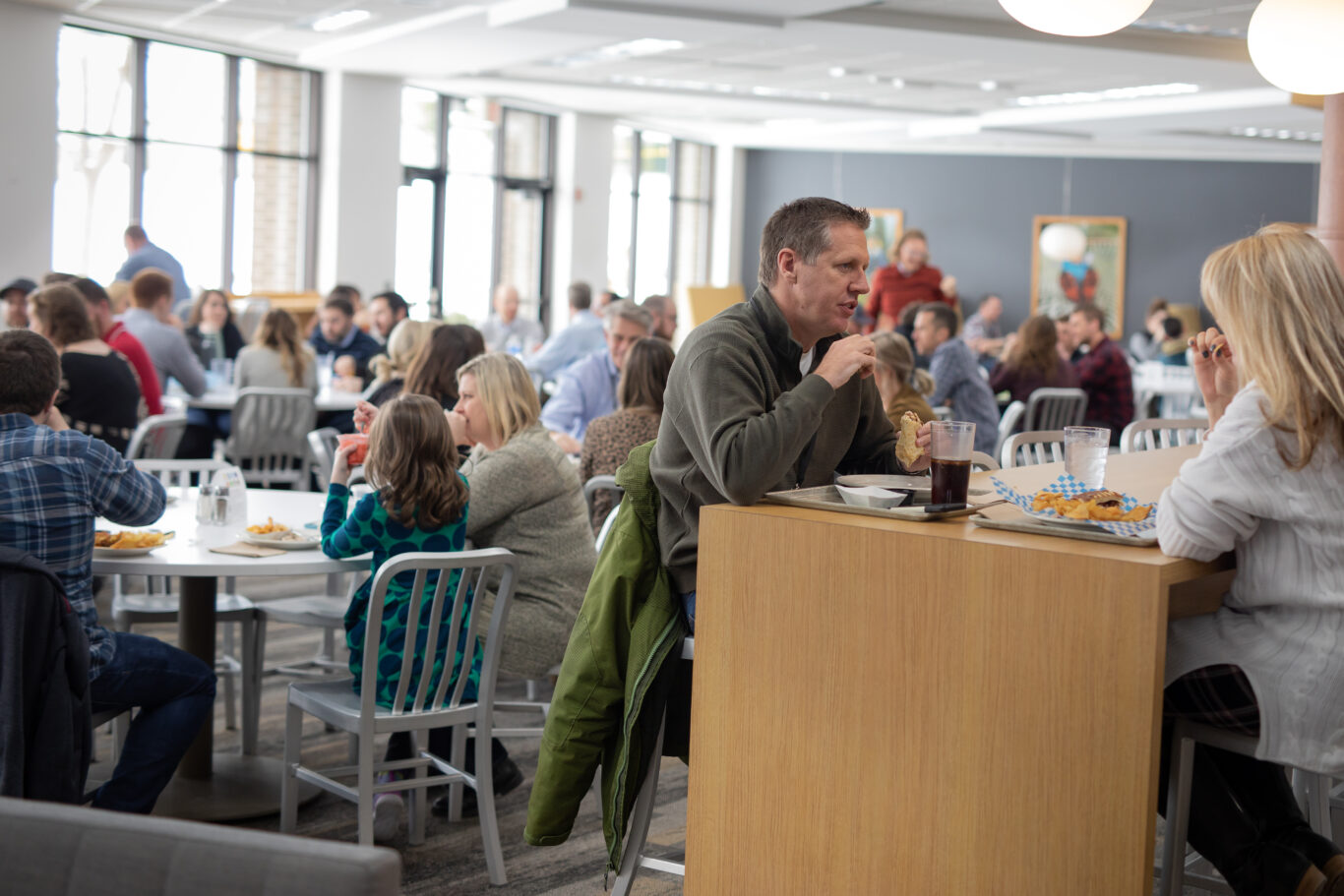The decision to renovate a dining facility isn’t one taken lightly, and it usually takes a lot for an organization to finally take the plunge. In general, the current facility must have pretty substantial limitations that prevent it from meeting diner needs. Maybe the ambiance doesn’t entice diners to sit down, relax, and enjoy a good meal. Perhaps the space isn’t set up for the variety-packed menu offerings visitors are interested in eating. No matter the case, renovation requires significant thought.
One of the greatest considerations leading up to a renovation project is cost. Renovations are expensive, whether it’s a “quick” update or a complete space overhaul. For colleges or universities, substantial effort often goes into raising the funds for a renovated dining hall. For businesses, there’s often a long budgeting process involving contractor bids and architectural designs. In either case, by avoiding a few common mistakes, your organization could save significant time, money, and effort on your dining facility renovation project.
We sat down for a quick chat with Dave Seweryn, our Associate Vice President of Operations, to talk about some of the most common and costly mistakes people make during their project, and how you can avoid them.
Renovate for a better dining experience.
If you’ve ever gone grocery shopping and bought the perfectly formed can of soup over the dented one, you can probably guess why an aesthetically pleasing dining space is so important. Consumers are drawn to places that visually meet their expectations, and first impressions are vital. If people don’t see what they’re looking for, they just might leave—and refrain from returning in the future.

When parents visit a college campus with their incoming first-year student, they may have high expectations about the on-campus dining experience. Can they ensure their student will be safe from allergens? Are there a good mix of menu offerings that meet their student’s dietary needs? Do they feel their student athlete will get adequate nutrition to perform their best? If they don’t feel a school can confidently meet these needs, they may disregard a school entirely, regardless of what other benefits the school offers.
For businesses, on-site cafeterias have the opportunity to serve as an entirely separate collaborative space. It can serve as a place where coworkers can tackle projects together and even become friends. If a corporate cafeteria isn’t set up to accommodate diners or doesn’t provide a welcoming atmosphere, team members may choose to spend their lunch hour—and their money—elsewhere.
Involve hospitality partners early. Really early.

In our experience, not involving hospitality partners early in the process is one of the top causes of wasted time and budget on a renovation project. Hospitality partners understand diners. It’s their business, after all! By inviting these partners to the table at the beginning of the renovation, you can ensure your diner’s needs—whether they’re students, staff, guests, or others—will be considered throughout the building process. Architects and interior designers have a wonderful eye for aesthetics, and, when combined with the lens of a hospitality expert, can create a space that’s equally appealing and functional.
We look at the end-user and, in particular, the flow of both diners and dining team members. We consider much more than space limitations when making decisions. We think about what menu items diners may want, how to organize those menus into logical stations, and what equipment is necessary to achieve maximum efficiency. It’s a delicate balance, making sure there’s enough equipment to effectively serve all diners without cluttering the space with unused equipment.
To quote Dave: “We aren’t focused on finishes. We’re focused on functionality. By bringing a hospitality partner in early—even as early as the initial concept presentation—strategy and ergonomics stay front-of-mind. Having that expert knowledge in the room prevents over-engineering or under-engineering a space.”
Not only can they help designers optimize each individual section, hospitality partners can connect the dots on how each piece comes together as a whole. They know the questions to ask and will ask them early to save everyone involved time, effort, and money.
Ask diners for their insights.
You don’t know what you don’t know, but your audience just might! There are so many ways to garner feedback from your diners and get clarity on their needs. Have students fill out a survey. Incentivize employees to participate in a focus group by offering a free meal pass. Insight into the user experience can help fill knowledge gaps during planning that can guide where to put your budget to have the biggest impact.
A few topics to cover could be what your diners like—or, more importantly, dislike—about the current facility. You might ask them what they would like to see that the current facility doesn’t already offer. There may be aspects to the current setup that they’d be disappointed to see go away, but you won’t know until you ask your diners.

“So often organizations make these seemingly brilliant changes and people are like, ‘Why did you do that?!’” Dave said. “By taking in their [diners’] feedback and integrating the pieces that make sense, you can go back to your community and say, ‘We did our due diligence. We heard you. We were listening.’”
Enrich your community.
Your dining facilities offer an incredible opportunity to enhance the community you’re building within your organization. Take into consideration mixed and flexible seating for eating alone, in small groups, and options for larger teams. Each of these types of dining spaces can help create a different experience to suit every one of your diners.
Whether it’s students making memories on your campus or strengthening bonds between coworkers, the relationships developed across dining tables are some of the strongest. When you’re improving your dining facility, make sure to set your organization up for success with the right hospitality partner by your side.
Need an expert opinion on your dining facility renovation, or just curious what that process looks like? Reach out to us. We’d be happy to chat.



